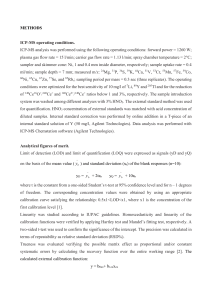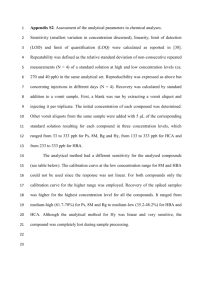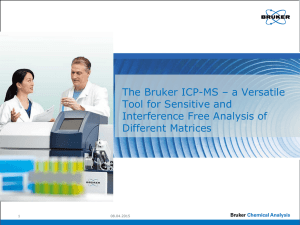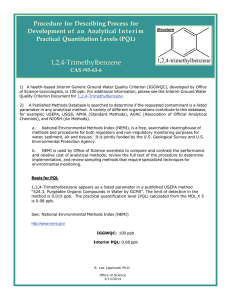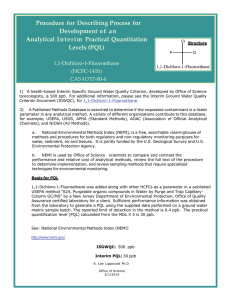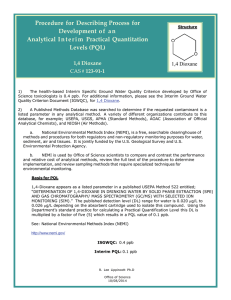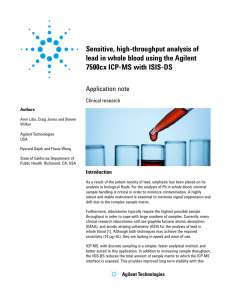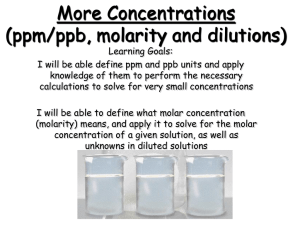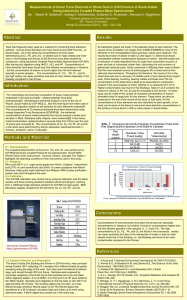ICPMS Data Reduction Procedure
advertisement
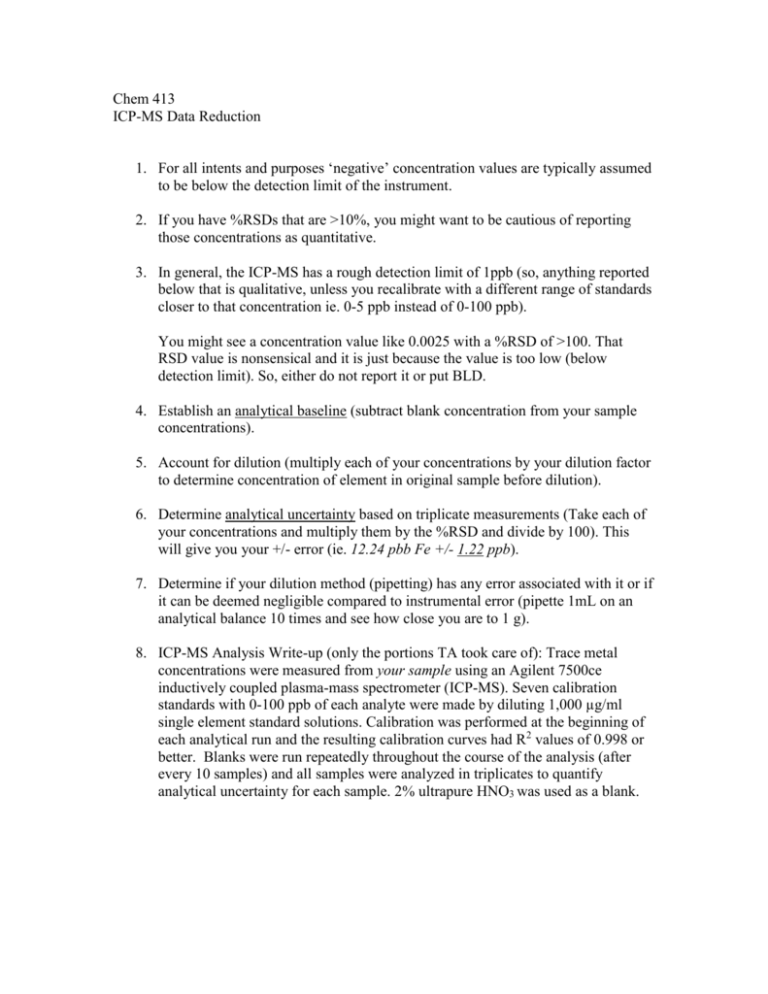
Chem 413 ICP-MS Data Reduction 1. For all intents and purposes ‘negative’ concentration values are typically assumed to be below the detection limit of the instrument. 2. If you have %RSDs that are >10%, you might want to be cautious of reporting those concentrations as quantitative. 3. In general, the ICP-MS has a rough detection limit of 1ppb (so, anything reported below that is qualitative, unless you recalibrate with a different range of standards closer to that concentration ie. 0-5 ppb instead of 0-100 ppb). You might see a concentration value like 0.0025 with a %RSD of >100. That RSD value is nonsensical and it is just because the value is too low (below detection limit). So, either do not report it or put BLD. 4. Establish an analytical baseline (subtract blank concentration from your sample concentrations). 5. Account for dilution (multiply each of your concentrations by your dilution factor to determine concentration of element in original sample before dilution). 6. Determine analytical uncertainty based on triplicate measurements (Take each of your concentrations and multiply them by the %RSD and divide by 100). This will give you your +/- error (ie. 12.24 pbb Fe +/- 1.22 ppb). 7. Determine if your dilution method (pipetting) has any error associated with it or if it can be deemed negligible compared to instrumental error (pipette 1mL on an analytical balance 10 times and see how close you are to 1 g). 8. ICP-MS Analysis Write-up (only the portions TA took care of): Trace metal concentrations were measured from your sample using an Agilent 7500ce inductively coupled plasma-mass spectrometer (ICP-MS). Seven calibration standards with 0-100 ppb of each analyte were made by diluting 1,000 µg/ml single element standard solutions. Calibration was performed at the beginning of each analytical run and the resulting calibration curves had R2 values of 0.998 or better. Blanks were run repeatedly throughout the course of the analysis (after every 10 samples) and all samples were analyzed in triplicates to quantify analytical uncertainty for each sample. 2% ultrapure HNO3 was used as a blank.
